#Indio Hills
Explore tagged Tumblr posts
Text










11/20/24
Indio Badlands hike
19 notes
·
View notes
Video
Keys View on a Morning with a Mountain Setting by Mark Stevens Via Flickr: in Joshua Tree National Park while at Keys View with a view looking to the southwest across the mountain desert landscape present.
#Apache Peak#Azimuth 249#Blue Skies#Central and Southern California Ranges#Creosote Bush#Day 4#Desert Landscape#Desert Mountain Landscape#Desert Plant Life#DxO PhotoLab 6 Edited#Indio Hills#Joshua Tree#Joshua Tree National Park#Joshua Tree National Park and California#Joshua Tree Ranges#Keys View#Landscape#Landscape - Scenery#Little San Bernardino Mountains#Looking SW#Mojave Desert#Mount San Jacinto State Park#Mountain Peak#Mountains#Mountains in Distance#Mountains off in Distance#Mountainside#Nature#Nikon D850#No People
4 notes
·
View notes
Text






















Coachella Weekend 1 ✅
#shakira#alessandra ambrosio#tinashe#camila coelho#rihanna#madison pettis#inanna sarkis#taylor zakhar perez#sabrina carpenter#raye#kesha#victoria justice#victoria monet#tems#taylor hill#bebe rexha#lili reinhart#noah beck#2024#coachella#valley music and arts festival#indio#weekend 1#looks#celebrities
18 notes
·
View notes
Text

If you want to get best enjoyment of your trip ten book your stay at Shadow Hills RV Park Indio. We offer best quality service with affordable price. For more details visit to our website.
0 notes
Text
Southern California man, 51, arrested for murdering parents: police
A man has been arrested and booked on two counts of homicide after two people – later revealed to be his parents – were found dead at their Inland Empire home. According to a press release issued by the Indio Police Department, officers responded to a residence in the 45000 block of Green Hills Court in Indio to conduct a welfare check on an elderly couple. Initially, officers did not notice…
0 notes
Text
Neighborhood Spotlight: Discover the Best Places to Buy a Home in Indio, CA

When looking to buy a home in Indio, CA, it’s essential to explore neighborhoods that match your lifestyle, preferences, and budget. Known as the “City of Festivals,” Indio offers a blend of modern amenities, scenic beauty, and a friendly community atmosphere that makes it a popular choice for homebuyers. In this spotlight, we’ll introduce you to some of the top neighborhoods in Indio, highlighting what makes each unique and why they may be the perfect place for your new home.
1. Indian Palms Country Club
If you love golf and an active lifestyle, Indian Palms Country Club should be on your list. This gated community offers a variety of properties, from spacious single-family homes to cozy condos. With access to a 27-hole golf course, tennis courts, fitness centers, and swimming pools, Indian Palms provides a resort-like lifestyle in the heart of Indio. The homes here are known for their classic architecture, well-maintained landscapes, and proximity to amenities, making it a top choice for those who want an active community.
2. Shadow Hills
Shadow Hills is a well-established neighborhood that has become popular among families and retirees alike. The area is known for its friendly atmosphere, spacious homes, and mountain views. It offers a range of property styles, from affordable single-family homes to luxurious estates, providing options for various budgets. Residents enjoy the quiet, peaceful environment while still being close to shopping centers, schools, and recreational facilities. This neighborhood’s charm lies in its suburban feel with easy access to urban conveniences.
3. Terra Lago
Terra Lago is a newer community that attracts those seeking modern homes with resort-style amenities. Homes here often feature contemporary designs, open floor plans, and energy-efficient appliances. The neighborhood surrounds the Terra Lago Golf Course and includes scenic lakes, giving residents beautiful views and plenty of outdoor activities. Terra Lago’s recreation center offers amenities such as a fitness center, playgrounds, and a pool area with a spa, making it a popular choice for families and active adults. With proximity to schools and easy access to Interstate 10, Terra Lago combines luxury and convenience in one package.
4. Sun City Shadow Hills
Part of the Del Webb 55+ community, Sun City Shadow Hills is ideal for active adults and retirees. This gated community provides an array of amenities, including two golf courses, pools, a fitness center, and countless clubs and activities tailored to the active senior lifestyle. Homes in Sun City Shadow Hills vary in size, with options for different layouts and features. The community is designed to foster connections, offering events and activities that bring neighbors together. With well-manicured landscapes and a secure environment, Sun City Shadow Hills is a tranquil and welcoming neighborhood.
5. Desert River Estates
Desert River Estates is perfect for those who seek luxury and privacy in Indio. This exclusive community features large, custom-built homes on expansive lots, with plenty of space for families and entertaining. Many homes come with private pools, outdoor kitchens, and scenic desert landscaping, creating a private oasis for homeowners. This neighborhood’s spacious properties and quiet environment appeal to those looking for an upscale lifestyle with proximity to the city’s amenities and attractions. While it’s on the higher end of the market, Desert River Estates is worth it for the luxury it offers.
6. Montage at Santa Rosa
Montage at Santa Rosa is a highly sought-after neighborhood known for its upscale, single-family homes. Situated near the Coachella Valley Music and Arts Festival venue, Montage at Santa Rosa attracts both permanent residents and vacation homeowners. Homes here often feature spacious floor plans, high-end finishes, and well-designed outdoor spaces. With a close-knit community feel and proximity to shopping, dining, and entertainment options, Montage at Santa Rosa is ideal for those who enjoy an active and social lifestyle. This neighborhood combines the best of luxury and convenience, making it a prime spot to buy a home.
Making Your Choice
Whether you’re looking for a vibrant community filled with activities, a peaceful retreat with scenic views, or a luxurious estate for entertaining, Indio has a neighborhood to match every preference. Each area has its own character, offering different levels of amenities, styles of homes, and community atmospheres. With its mix of recreational opportunities, proximity to festivals and events, and sunny year-round climate, Indio makes for an excellent place to settle down.
Partnering with The Wilder Group
When it’s time to buy a home in Indio, CA, choosing the right neighborhood is just the first step. The Wilder Group is here to guide you through every aspect of the buying process, from neighborhood insights to negotiating the best price. With deep expertise in the Indio market, Wilder Group helps clients find homes that not only meet their needs but also align with their long-term goals. Contact us today and let’s find your perfect neighborhood in Indio!
Connect us : Facebook | Instagram | Yelp | YouTube
#NeighborhoodSpotlight#IndioCAHomes#DiscoverIndioLiving#BestPlacesToLive#IndioHomeHunt#DreamHomeIndio#ExploreIndio
0 notes
Text
✍Penang o Georgetown
Llegamos a la isla de Penang, donde se encuentra Georgetown, la primera ciudad colonial británica en el sudeste asiático. Es muy similar a Melaka y Singapur, ya que formaba parte de la ruta comercial establecida por la Compañía Británica de las Indias Orientales. La ciudad es famosa por sus "shophouses", edificios que combinan comercio en la planta baja y vivienda en la superior. Nos alojamos en un hostal con este diseño, lo que nos permitió verlas por dentro y entender las dimensiones de estas casas. En Georgetown vive una gran comunidad de chinos malayos, y su herencia es evidente en los numerosos comercios relacionados con la comida, las ferreterías, cafeterías y los templos.

Los días en Penang pasaron volando. La ciudad tiene una atmósfera mística, y nos pasamos el tiempo recorriendo sus murales callejeros, refugiándonos del calor y probando la comida local (al menos yo). En la Pequeña India, encontré un puesto de samosas que, sin duda, fueron de las mejores que he probado. También probé la laksa, una sopa con leche de coco, fideos de arroz y mariscos. Aunque no logré identificar todos los ingredientes, estaba rica. Dado que Nico no puede comer alimentos con aceite por problemas de la vesícula, ajustamos nuestra dieta, cambiamos los desayunos por y encontramos el pollo al vapor, que resultó ser clave para evitar los dolores.




Visitamos el templo Kek Lok Si, ubicado en una colina, y en la cima nos recibió la impresionante estatua de la diosa de la misericordia, al ser un templito nos convergemos en la reflexión y tranquilidad, aquí subimos a la pagoda y también apreciamos una ceremonia budista en donde realizaron canticos.





También hicimos una visita rápida a los templos que hay que son de Myanmar y de Tailandia en donde vemos un buda reclinado que era parte de un cementerio donde vimos nichos con cenizas de feligreses.



Y una de las ultimas cosas que hicimos subimos a la Penang Hill para utilizar el teleférico y apreciar las vistas desde lo alto de la colina.



Una de las cosas que más nos emocionaba ver eran los famosos murales que había visto en varios posts sobre esta ciudad. Sin embargo, al llegar, nos encontramos con muchos de ellos deteriorados por la humedad de las paredes y las lluvias. Muchos están tan desgastados que apenas se distingue lo que alguna vez fueron. En los puestos callejeros que vendían postales, vimos fotos de los murales recién pintados, y la diferencia era abismal: era otra realidad.




Igual habían otros que si se veían y nos imaginamos que esos si los mantenían.


Y otros que eran nuevos, lo akam es que se van haciendo más.

Además, han agregado nuevas piezas que parecen viñetas hechas con fierros negros. Aunque no logramos entender del todo su significado, resultaban chistosas y tenían un toque.


La última noche nos unimos a los locales frente a una botillería, donde conocimos a un chef indio-chino que trabajaba en un hotel. Compartimos su filosofía de vida y nos dio consejos para continuar nuestro viaje. Agradecidos por la experiencia, emprendemos el rumbo hacia Tailandia.

0 notes
Text

Saturday Afternoon Reggae Show DJ LeBaron Lord King June 1, 2024 [email protected]
SaturdayAfternoonReggaeShow
4:00 PM Bob Marley & Lauren Hill - Turn Down Your Lights 4:04 PM Luciano - I Am 4:07 PM Pasnbesa - Rhythm of Life 4:11 PM Junior Byles - Fade Away 4:15 PM Mikey General - Look Within 4:20 PM Eesah - Sound Boy 4:22 PM Christopher Ellis - Rub a Dub 4:25 PM Yellowman - Lost Mi Love 4:31 PM Buju Banton - Holy Mountain 4:36 PM Daddy Freddy - I Been Down These Road Before 4:39 PM Damian Marley - Road to Zion 4:44 PM Black Uhuru - No, No, No 4:48 PM Lee Perry - Infinity D Sub 4:53 PM King Tubby - Heaviest Dub 4:57 PM Jamu - Jericho Skank 5:00 PM Damian Marley - My Sweet Lord 5:04 PM Luciano - What We Gonna Do 5:08 PM Cedric Myton - No Counterfeit 5:11 PM Samory I - Son Of David 5:16 PM Kabaka Pyramid - Well Done 5:19 PM Macka B & Solo Banton - Edutainment 5:24 PM Queen Omega - Wise Queens 5:27 PM John Carlos - Black Harmony 5:34 PM Anthony B - Wha Dat 5:40 PM Alborosie - Journey to Zion 5:45 PM Ini Kamoze - Trouble You a Trouble Me 5:48 PM Bob Marley - You Could Be Love 5:54 PM Luciano - No Night In Zion 5:58 PM Queen Ifrica & Usain Bolt - A.E.I.O.U (Nothing) 6:00 PM The Wailers - Arise Black Man 6:04 PM Baba Ras - Real Vegetarian 6:08 PM Skip Marley - Call Me Human 6:11 PM J Boog - Blaze It Days 6:16 PM Don Carlos - Knock Knock 6:19 PM YG Marley - Praise Jah in the Moonlight 6:24 PM DeZaire - Ghettos of Babylon 6:28 PMPeter Tosh - Stop That Train (Acoustic) 6:33 PM Junior Kelly - Sick a Dem 6:37 PM Fe Me Time All Stars - Mother Liza 6:40 PM Matisyahu - Sunshine 6:43 PM Stoneface Priest - After Pride Comes Fall 6:48 PM Ras Indio - Bed of Roses 6:51 PM Zion Head - Chalice Baptized 6:56 PM Isha Bel - A Nuh Man Way
#kpooradio#reggae#reggaemusic#sanfrancisco#oakland#bayarea#california#jamaica#america#reggaeville2024#mylifeisreggae#kpoo#kpop#californiaroots#worldareggae#rastafari
0 notes
Text
Doja Cat Quits Instagram - Hits 96 | WDOD-FM
New Post has been published on https://petn.ws/EaD0x
Doja Cat Quits Instagram - Hits 96 | WDOD-FM
Doja Cat performs at the Coachella Valley Music and Arts Festival held at the Empire Polo Club in Indio, California, U.S., April 24, 2022. REUTERS/Maria Alejandra Cardona Doja Cat Quits Instagram Despite having a number one song with “Agora Hills” and going on tour this Spring and Summer, Doja Cat has deleted her Instagram account. […]
See full article at https://petn.ws/EaD0x #CatsNews
0 notes
Text
BullDog’s Mark in the “Weed Stores Near Me” Quest
Thousand Palms is highly renowned as a picturesque oasis known for its tranquility, scenic attractions, and warm embrace of nature. But what if we told you there’s a way to elevate these experiences, to see Thousand Palms through a new lens? Enter BullDog Cannabis, one of the most sought-after weed stores near me for those in the know. Let’s embark on an enchanting journey with BullDog by our side.
Savor the Sights When you’re in Thousand Palms, every sight seems like it’s worth capturing. But there are a few that truly stand out, especially when coupled with BullDog’s premium cannabis.
Coachella Valley Preserve: Not just your regular nature preserve. The intertwining trails and stunning palm oases are a treat for the soul. Light up one of BullDog’s premium pre-rolls, take a leisurely stroll, and let the beauty sink in. Only a short drive from Palm Springs, Indian Wells, Rancho Mirage, Palm Desert, Indio, and other desert cities, the Coachella Valley Preserve is “The Old West” at the foot of the Indio Hills. Explore some of the trails, wildlife, and desert habitats that span more than 20,000 acres.
Thousand Palms Oasis: As the sun sets, casting a golden hue on the palm groves, having a vape pen from BullDog at hand can make the experience even more mesmerizing. Feel the synergy between nature’s spectacle and BullDog’s finely crafted products.
Discovering the Hidden Gems of Thousand Palms While the main attractions of Thousand Palms are undeniably enticing, venturing off the beaten path, guided by BullDog’s recommendations, can lead to delightful and thrilling discoveries. The region is home to a rich selection of desert flora and fauna. Embarking on a guided nature walk can introduce you to unique species and landscapes that often go unnoticed. And what better way to enhance this nature excursion than with some of BullDog’s discreet vape pens? But the journey doesn’t end there. From quirky cafés resonating with bohemian vibes to bistros serving delectable local delicacies, the gastronomic experiences, especially after indulging in a BullDog treat, are unparalleled.
A Green Retreat – The BullDog Experience When you walk into the BullDog Cannabis Dispensary, there’s an unmistakable sense of calm that envelops you. This isn’t just any of the weed stores near me. The ambiance is a curated blend of soft lighting, meticulously arranged displays, and a warm, knowledgeable staff waiting to offer guidance. The beauty of BullDog lies in the personalized touch we bring to each customer interaction.
Ever felt lost in the overwhelming world of cannabis strains and products? Our BullDog’s experienced budtenders are always there, ensuring that you feel at ease, tailoring their suggestions specifically to your preferences and needs. Moreover, the dispensary takes the experience a notch higher with its regular interactive sessions and workshops. Whether you wish to delve deeper into the nuances of various strains or aim to add some flair to your culinary prowess with edibles, there’s always something happening at BullDog.
When combined with the BullDog experience, a getaway to Thousand Palms becomes an unforgettable adventure. The dispensary’s commitment to excellence, involvement in the local community, and environmentally responsible business methods guarantee that every journey will be one to remember.
Concentrating on Concentrates For the uninitiated, cannabis concentrates might sound intimidating. But with BullDog guiding the way, it’s a journey of pure discovery. Here’s how you can pair these potent products with activities that resonate.
Arts, Music and Meditation Set up a canvas outdoors, perhaps in your backyard or at a quiet spot in the park. As the BullDog concentrate works its charm, let your creativity flow. Paint, sculpt, craft, the possibilities are endless, let cannabis be your muse. When it comes to meditation sessions, the serenity of Thousand Palms combined with BullDog’s concentration can lead to a meditation session like no other. Feel your senses heighten and your mind declutters, reaching a state of pure zen. Listen to some soulful tunes or even live music at local venues. With each note amplified by the effects of the concentrate, it’s an auditory experience that’s hard to put into words.
Begin Your Palm Spring Journey Thousand Palms in itself is a marvel, a place where nature’s best is on full display. But when combined with the expertly curated experiences offered by BullDog, it transforms into an elevated adventure. It’s no wonder that when people search for weed stores near me, BullDog tops the list. With every product, be it edibles, concentrates, or classic buds, BullDog promises to heighten the essence of Thousand Palms, making every outing truly unparalleled. Remember, with free delivery from our dispensary up to 15 miles away with no minimum, we can easily send you what you pick from the menu. So don’t wait any longer, make the most of your cannabis purchase with our help.
0 notes
Video
Real Mountain Views in Joshua Tree National Park by Mark Stevens Via Flickr: In Joshua Tree National Park with a view looking to the west across the mountain and desert landscape present in his part of southern California. This is at Keys View.
#Apache Peak#Azimuth 265#Blue Skies#Blue Skies with Clouds#Central and Southern California Ranges#Creosote Bush#Day 4#Dead Tree Limbs on Ground#Desert Landscape#Desert Mountain Landscape#Desert Plant Life#DxO PhotoLab 6 Edited#Indio Hills#Joshua Tree#Joshua Tree National Park#Joshua Tree National Park and California#Joshua Tree Ranges#Keys View#Landscape#Landscape - Scenery#Little San Bernardino Mountains#Looking West#Mojave Desert#Mount San Jacinto State Park#Mountain Peak#Mountains#Mountains in Distance#Mountains off in Distance#Mountainside#Nature
4 notes
·
View notes
Text
15 mejores pueblos pequeños para visitar en Texas
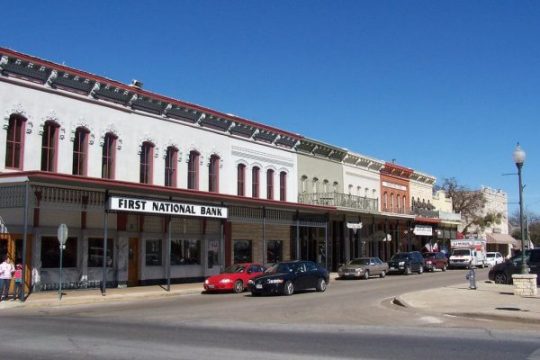
Texas es el segundo estado más grande de los EE. UU. Y se toma esta clasificación en serio. Encontrarás pueblos de Texas, grandes porciones, grandes sombreros, grandes casas, todo lo grande cuando visites. Pero al igual que en los estados más pequeños, el verdadero corazón de Texas se puede encontrar en las pequeñas ciudades y los paisajes naturales esparcidos por todas partes. Ya sea que viaje por el Golfo de México o por las principales ciudades como Dallas o Houston, no querrá perderse al menos algunas escalas en algunos de estos pequeños pueblos únicos y encantadores.
1. Granbury

Fuente: flickr Granbury, Texas Si está buscando el viejo oeste estadounidense y la historia de los proscritos, Granbury es uno de los mejores pueblos en Texas gran lugar para comenzar tu viaje por Texas. La mayoría cree que Jesse James, un famoso forajido de finales del siglo XIX, está enterrado en Missouri, pero los habitantes de Granbury insisten en que en realidad está enterrado allí. Asegúrese de visitar la casa de la Ópera de Granbury (establecida justo después de la revolución de Texas) y la compañía Revolver Brewing mientras lo hace. Vaya un poco más atrás en el tiempo cuando visite Dinosaur World, con réplicas de tamaño natural de algunas de las criaturas cuyos fósiles se han encontrado cerca.
2. Parte superior redonda
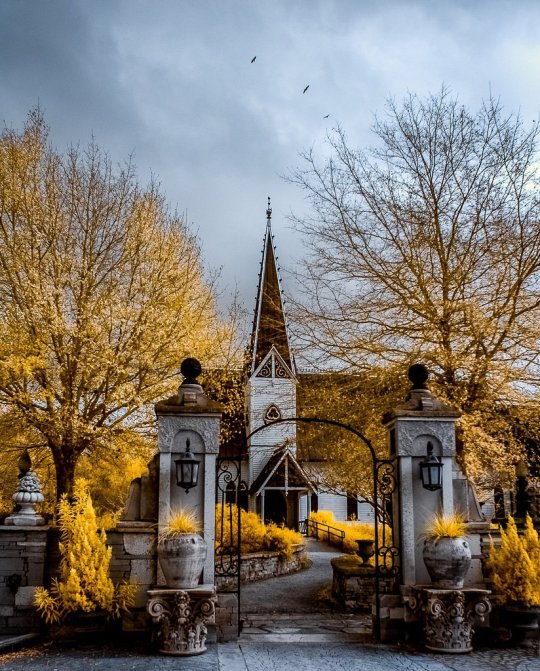
Fuente: flickr Iglesia de la cima redonda Entre Houston y Austin se encuentra la amada ciudad de Round Top. Los tejanos lo saben por el espectáculo de antigüedades, la increíble escena artística y los deliciosos pasteles que solo puedes conseguir en Royers Café. Toda la ciudad tiene aproximadamente 600 acres en total y la friolera de 100 habitantes, pero no cuente a Round Top. Cada verano puede asistir a actuaciones en el instituto de música Festival Hill, que atrae a músicos de todo el país, y al festival Shakespeare at Windedale.
3. Jefferson

Fuente: flickr Tours en barco por el río Jefferson A los B & B-ers les encantará una visita a la capital de los Bed and Breakfast del este de Texas. Jefferson está ubicado cerca de la frontera con Louisiana y tiene una población de poco más de 2,000 personas. Gracias a su proximidad al lago O 'the Pines y al lago Caddo, hay muchas aventuras al aire libre que se pueden vivir aquí. Puede realizar un recorrido por el lago, un viaje en bote a vapor y, por supuesto, una excelente pesca. Visitar Jefferson es un poco como retroceder en el tiempo hasta mediados del siglo XIX. La ciudad ofrece paseos en carruajes tirados por caballos, recorridos de fantasmas y antigüedades. Cuando se fundó, la ciudad era un próspero puerto fluvial y muchas de las actividades turísticas que puede experimentar hoy se centran en esta base.
4. Nacogdoches

Fuente: flickr Sendero Azalea - Nacogdoches, Texas Originalmente un asentamiento español, Nacogdoches es la ciudad más antigua de Texas. Los misioneros que esperaban convertir a los indios americanos se establecieron en el área y la mezcla de culturas creció naturalmente en la ciudad que es hoy. Además de ser difícil de deletrear y pronunciar, Nacogdoches es una ciudad histórica. Los visitantes disfrutan de Stone Fort, Old Stone Fort Museum, Ruby Mize Azalea Garden, Oak Grove Cemetery, rutas de senderismo que alguna vez fueron rutas comerciales, Camp Tonkawa, Durst Taylor House, Sterne-Hoya House, Millard's Crossing Village, Old University Building y el Hotel Fredonia. Pero si llega por primera vez, asegúrese de hacer del centro histórico y del centro de visitantes su primera parada. Pasee por las calles de ladrillos rojos y enamórese de la hospitalidad sureña. ¡Trae una cámara!
5. Rockport
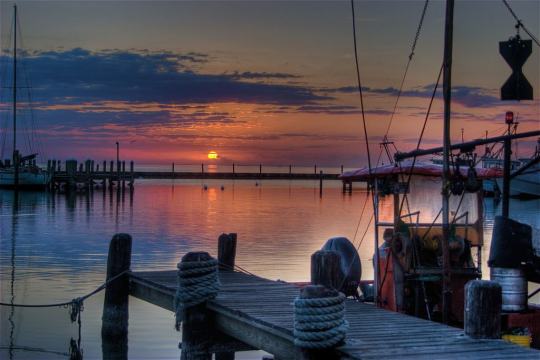
Fuente: flickr Amanecer en Rockport, Texas Fundado como poco más que un matadero a finales del siglo XIX, Rockport se ha convertido en una popular atracción turística gracias a su fantástica playa. Los funcionarios locales saben que la playa es un gran atractivo y, por lo tanto, se invierten muchos recursos en mantenimiento y servicios. Haciéndola una experiencia de playa verdaderamente espectacular. El Fulton Mansion and Education History Center es un edificio del siglo XIX que se consider�� bastante innovador para su época, incluidas cosas como plomería interior y aire acondicionado central. El Museo Marítimo de Texas permite a los visitantes explorar la historia del área desde el asentamiento español hasta el proceso de búsqueda de petróleo en alta mar. Asegúrese de visitar el Centro de Arte de Rockport, el Refugio de Vida Silvestre Connie Hagar, el Oysterfest, el Molino de Viento en el Árbol y el Festival del Vino.
6. Pecos
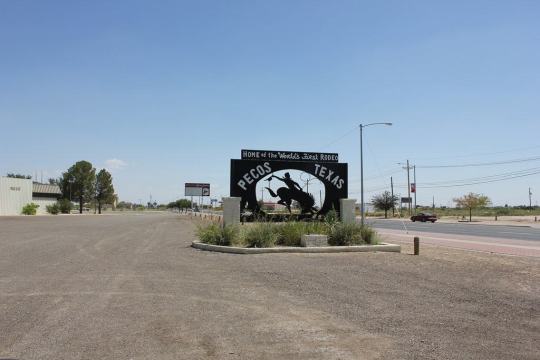
Fuente: flickr Pecos Justo entre El Paso y Dallas se encuentra Pecos. Conocido en todo Texas por su maravilloso legado, sus melones y su residente más famoso: el héroe folclórico estadounidense Pecos Bill. Pero lo que los tejanos realmente saben sobre la ciudad es que alberga el mejor y más grande rodeo del país. De hecho, la historia dice que el primer rodeo se llevó a cabo aquí en 1883.
7. Wimberley

Fuente: flickr Wimberley Wimberly es pequeño, pero no tranquilo. Todos los viernes, los lugareños asisten al Bluegrass Jam. Celebrada en un estacionamiento vacío, lleno del encanto de una pequeña ciudad, la reunión es informal y todos los que aman la música y pueden elegir un instrumento pueden participar. La parte se prolonga hasta altas horas de la noche y define la pequeña ciudad. Si quieres cenar contigo Jam, intenta sentarte en el porche de Ino'z. También te encantará el Blue Hole, un hermoso lugar para nadar en Jacob's Well. Hay grandes árboles con cuerdas atadas para columpiarse en el agua. Otras actividades al aire libre incluyen caminatas, paseos a caballo, campamentos y pesca.
8. Salado
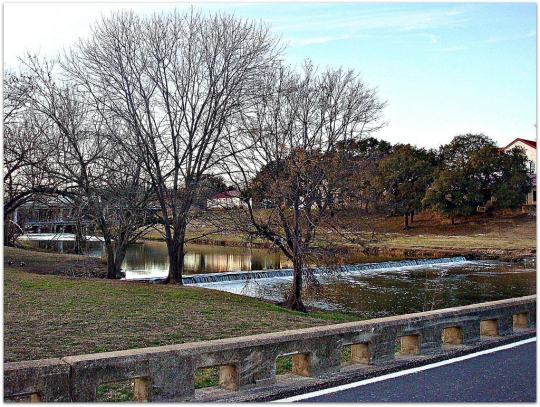
Fuente: flickr Salado Esta es una ciudad pequeña pero hermosa a veces conocida como la Mejor Ciudad Artística de Texas. Con apenas unas 2.000 personas allí, Salado ha logrado mantener su relevancia histórica. Puede alojarse en Stagecoach Inn, el hotel más antiguo de la ciudad, visitar la antigua universidad, que abrió brevemente sus puertas en la década de 1860, recorrer la Casa de George Washington Baines, que es una de las 20 ubicaciones de Salado que figuran en el Registro Nacional de Lugares Históricos. . Y la primera entrada a los Monumentos Naturales de Texas es Salado Creek, un gran motivo de orgullo para los lugareños. Pero lo mejor de Salado es el ambiente. Te sentirás como si estuvieras moviéndote por el Viejo Oeste estadounidense.
9. Marfa

Fuente: flickr Marfa Pequeña pero conocida internacionalmente en el mundo del arte, Marfa está escondida en el desierto del oeste de Texas. Está un poco fuera de su alcance, pero casi todas las listas que encuentre sobre Texas le dirán: no se lo pierda. Esparcidas por la ciudad hay fantásticas instalaciones de Dan Flavin, Donald Judd y más. Repleto de galerías y excelentes restaurantes, Marfa es un evento cultural desde el amanecer hasta el anochecer. Después de la cena, podrá juzgar por sí mismo si las luces de Marfa son un fenómeno natural o el trabajo de extraterrestres, ¡un debate comunitario en curso desde finales del siglo XIX! Disfrute de museos, bodegas y el Salón de la Fama de los Vaqueros. Parte del Parque Nacional Texas Big Bend se encuentra en Marfa. El parque ha documentado más de 60 especies de cactus y es un excelente lugar para mochileros. Semanalmente se ofrecen recorridos guiados para mochileros y observación de aves.
10. Schulenburg

Fuente: flickr Schulenburg Originalmente fundada por pioneros austríacos y alemanes, Schulenberg alberga las famosas iglesias pintadas: edificios con una arquitectura impresionante, una historia interesante, estatuas ornamentadas y un diseño increíblemente detallado. Tiene varios nombres, incluidos "ciudad del ferrocarril", "ciudad de los músicos" y "a medio camino de todas partes". Los viajeros también se divierten mucho en el Von Minden Hotel and Theatre, supuestamente está embrujado. Si realmente quiere experimentar algo de diversión, no se pierda el Museo de Música de Texas Polk. Hay tanto que ver en Schulenburg que la cámara de comercio local proporciona docentes que lo acompañarán en su autobús o automóvil para brindarle un recorrido personalizado por la ciudad.
11. Caza

Fuente: flickr Caza, Stonehenge En el centro-sur de Texas encontrará una serie de hermosas colinas de piedra caliza. En medio de ellos, encontrarás a Hunt. Es el paisaje lo que hace que Hunt sea digno de una visita. Las bifurcaciones norte y sur del río Guadalupe se unen aquí para crear paisajes notables y excelentes áreas recreativas en cada esquina. Impresionantes lagos, ríos y colinas se combinan para hacer de este un sueño para los amantes de la naturaleza. Muchos visitantes optan por alquilar una casa a lo largo del río o refugiarse en un resort y quedarse por un tiempo. Asegúrese de visitar Kerr Wildlife Management Area, Crider's Rodeo and Dance Hall, donde los vaqueros ofrecen un espectáculo en las noches de verano, y Stonehenge II, una réplica del original construido en la bifurcación norte del río. Aproximadamente un 60% más alto que el original, el sitio también tiene réplicas de las misteriosas estatuas encontradas en la Isla de Pascua.
12. Cañón
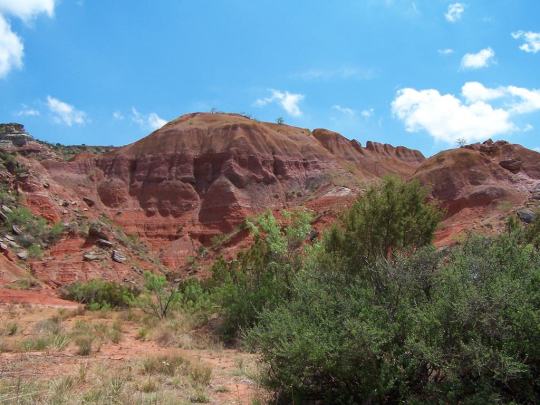
Fuente: flickr Cañón de Palo Duro Canyon recibe su nombre por su funcionalidad. Sirve como la puerta de entrada principal al Cañón Palo Duro, el segundo cañón más grande de los EE. UU. La mayoría de los texanos lo llaman el Gran Cañón de Texas, y es tan impresionante como parece. Las excavaciones arqueológicas han encontrado evidencia de que los indios americanos alguna vez habitaron el lugar, lo que lo reconoció como un Monumento Nacional de EE. UU. La pequeña ciudad del Panhandle de Canyon no solo alberga el parque estatal donde se encuentra Palo Duro, sino también el Museo Histórico Panhandle-Plains, Buffalo Lake Refuge, Texas Musical Drama y excelentes recorridos por los ranchos cercanos, incluido un rancho en funcionamiento que una vez perteneció a uno de los fundadores originales de Canyon. Planifique quedarse un rato, ya que hay mucho que absorber en esta hermosa zona.
13. Luckenbach

Fuente: flickr Luckenbach, Texas Willie Nelson y Waylon Jennings (dos cantantes de country y western estadounidenses) pusieron a Luckenbach en el mapa con su canción del mismo nombre. Esta es una ciudad que define el sueño, con pocos residentes y pocas tiendas. De hecho, su cartel de bienvenida dice de manera divertida: "Población: 3". Luckenbach comenzó como un puesto comercial y creció de manera constante a lo largo de los años hasta la década de 1970, cuando los 'dueños' de la ciudad intentaron venderla. Y lo creas o no, lo hicieron. Tres tejanos compraron la ciudad y colocaron lugares de entretenimiento en toda la ciudad, creando el destino moderno de música y entretenimiento. Ven a ver un espectáculo, relájate en un fantástico B&B y haz lo que hacen los lugareños: relájate.
14. Port Isabel
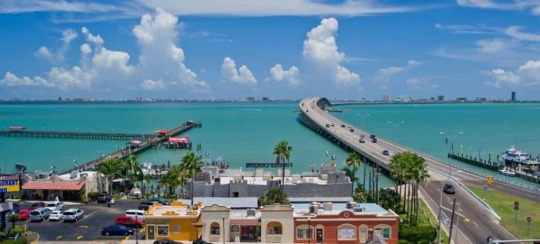
Fuente: texas Port Isabel, Texas Cerca de la frontera con México, Port Isabel es una de las ciudades costeras más antiguas de Texas. Port Isabel es simplemente uno de los lugares más bellos del estado, y solo eso atrae multitudes de año en año. Sus dos grandes atractivos son el Faro de Port Isabel y el Torneo Internacional de Pesca de Texas. El faro está ubicado en la plaza del pueblo (la única plaza del pueblo en los EE. UU. Con un faro) y data de mediados del siglo XIX y fue fundamental en las batallas de la Guerra Civil en el área. A los visitantes les encanta el parasailing, el kayak, los paseos en bote, la pesca deportiva y el avistamiento de delfines. No olvide visitar la cabaña de los guardianes del faro, el Museo de los Tesoros del Golfo y el Museo Histórico.
15. Fredericksburg

Fuente: flickr Fredericksburg, Texas Fredericksburg, fundada en el siglo XIX por el príncipe Federico de Prusia, es increíblemente popular en Texas. De origen fuertemente alemán, el distrito histórico está incluido en el Registro Nacional de Lugares Históricos. La mayoría de la gente piensa en boutiques, tiendas eclécticas, antigüedades y museos encantadores como el Museo Pioneer y el Museo Nacional de la Guerra del Pacífico, cuando piensan en Fredericksburg. Disfrute de un paseo por el distrito histórico y, después, diríjase a Enchanted Rock, una formación rocosa de granito rosa que es tan misteriosa como hermosa. Asegúrese de escuchar "Texas German" mientras esté allí. Fredericksburg es uno de los pocos lugares donde todavía se puede escuchar. Read the full article
0 notes
Text

If you want to get best experience of your trip at Coachella Valley then Shadow Hills Rv Resort Indio CA will be the best option for you. We have friendly staff and all the facilities that you need. To learn more details visit to our website.
0 notes
Link
Check out this listing I just added to my Poshmark closet: Ricardo Beverly Hills INDIO Weekender Duffel Bag Navy Blue New w/o Tag.
0 notes
Text
ANAGRAMMED CABINET DEPARTMENTS
◊ the subject
◊ the Indios
◊ the straw
◊ the hills
◊ the west
◊ the brush
◊ The binding
◊ the sharpshooter
◊ the point
◊ the whites
◊ the Kentucky
◊ the leather
◊ the trap
◊ the mass
◊ the mystery
◊ the skin
◊ the boy
◊ the armyâs
◊ the horsemanâs
◊ the truth
◊ The otherâs
◊ the carbine
◊ the treasureâwonât
◊ the quartet
◊ The bulk
◊ the bushes
◊ the night
◊ the rest
◊ The mustangers
◊ the mount
◊ the Texan
0 notes
Text
Mediaonedesign.com - Your Gender Hand It Over shirt
Buy this shirt: Click here to buy this Mediaonedesign.com - Your Gender Hand It Over shirt
#TeechallaclothingLLC The event was hosted by co chairs Regina King, Blake Lively, Ryan Reynolds, and Lin Manuel Miranda, while designer Tom Ford, Instagram’s Adam Mosseri, and Vogue’s Anna Wintour served as honorary co chairs With shows like Succession currently dominating our television screens, there’s a lot of conversation around the Your Gender Hand It Over shirt What’s more,I will buy this idea of stealth wealth fashion—and that quieter sense of style was certainly prevalent on the red carpets this week. Hollywood A listers leaned into designs for the step and repeat that were clean and minimal, while still feeling wholeheartedly luxurious. Instead of flashy colors or bold prints, there was a real emphasis on strong silhouettes. Take Kendall Jenner who wore a white bodycon Alaïa dress to a Revolve dinner in Beverly Hills. Its asymmetrical ruching enhanced her figure in a subtle but flattering way. The same went for Jennifer Garner who wore a cream, strapless Gabriela Hearst gown replete with vertical gold piping to the premiere of The Last Thing He Told Me in Los Angeles. Similarly, it was the small details that spoke volumes. There were quite a few tailored looks that shone this week as well. For a Vogue dinner celebrating Gigi Hadid’s cashmere label Guest In Residence in New York, the model showed up wearing a neutral one shouldered knit top of her own design that she paired with a cream suit—the perfect summer two piece. For more of an evening slant, Rachel Weisz sported The Vampire’s Wife burgundy suit in velvet, an elegant choice for her Dead Ringers premiere in London. In the same city, Jodie Turner Smith attended a panel for Stars Wars in a fresh take on the shirt dress—though hers was in bright red silk and by Gucci, of course.

#TeechallaclothingLLC Which were your favorite celebrity looks this week? Be sure to vote below, and check back on Friday to see which ensemble is the Your Gender Hand It Over shirt What’s more,I will buy this ultimate best dressed of the week.Which looks were your favorite? Cast your vote. Weekend one of Coachella kicked off in Indio, California this past Friday—and the annual music festival was the fashion spectacle you’d expect it to be. Considering the lineup this year is star studded with performers such as Bad Bunny, Blackpink, and Blondie, the Coachella mainstage had no shortage of bold performance looks. In the crowd, stylish stars such as Hailey Bieber, Lil Nas X, and Shawn Mendes have also been bringing their best festival fashion, making for one epic weekend of perfectly summery street style. On the Coachella stages, the glitzy attire worn by performers has been ready to dazzle the crowds. Headlining group Blackpink embraced their coordinated girl group style with looks that were heavy on the silver embellishments and cutouts. Iconic rock group Blondie also leaned into disco ball dressing lead singer Debbie Harry’s cape was covered in shards of reflective mirrors. Bad Bunny, meanwhile, chose ERL’s colorful printed puffer coat to stay stylishly warm.

Home: Click here to visit our store: Mediaonedesign.com
0 notes